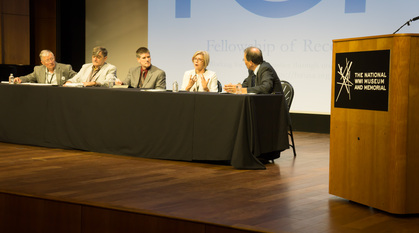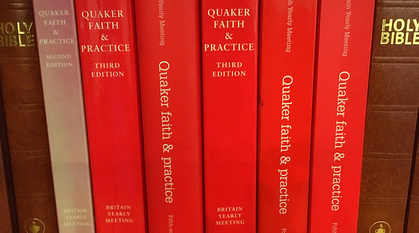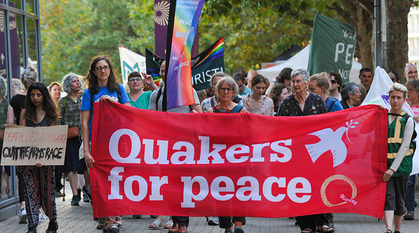6 ways to make Quaker meeting houses more sustainable
How many Quakers does it take to change a light bulb? Huw Davies explains how to lessen the environmental impact of our meetings and meeting houses, ranging from simple steps to big ideas.

There are many ways to take action against the climate crisis. More than 100 Quakers recently took part in a mass lobby of Parliament at Westminster, urging MPs to take action. Others have been involved in school strikes, anti-fracking action and activism with the growing Extinction Rebellion movement.
It's also important to remember that the sustainability we might call for in other areas of our lives applies to our Quaker meetings and meeting houses as well. In my role I've come across many ways meetings are trying to make their properties more sustainable – and seen a lot of opportunities yet to be taken, too.
Here are six ways to make a difference.
1. Get organised
One way to start making your meeting house more sustainable is to form a sustainability group within the meeting of people who are interested in these issues. A great way to do this is through the Eco Church structure – it's free, you can do what you want when you want, and there are plenty of helpful resources to get you started. You can also sign up to Eco Church or form a separate group at a local or area meeting level, depending on what works best for you.
As people become more informed and aware of the changes they can make, the effect will ripple out into their personal lives where their carbon footprint is probably much bigger than their share of the meeting house footprint.
2. Sign up with a renewable energy supplier
Renewable energy suppliers have become increasingly popular in recent years, and switching to one is a lot simpler than you might think.
Many meetings have signed up to the new Quaker Renewable Energy Scheme which has been developed with British energy supplier Good Energy to offer preferential terms and prices to Quaker meetings. Good Energy offers 100% renewable electricity sourced from eight of its own sites as well as a community of over 1,500 independent renewable generators across the UK. Find out more about Good Energy's deal for Quaker meetings with this guide (PDF) or contact SME@goodenergy.co.uk, quoting 'Quaker Energy Scheme'.
3. Have a light bulb moment
Have a look at the light bulbs used in your meeting house and consider replacing them with Light Emitting Diodes (LEDs) wherever possible. These use only a fraction of the energy of old style filament bulbs, earlier generation halogen long life bulbs or even fluorescent and compact fluorescent fittings. LEDs are more costly to buy but the price is coming down quickly. They are widely available and they have a longer life span than other types of bulb.
4. A breath of fresh air?
One of the simplest things you can do to cut energy costs and improve your meeting house environment is to seal up draughts around windows and doors. Draughts can also come through gaps in the floorboards, so carpet your floors if possible, especially in the meeting room. This will make the room feel warmer.
Extensive draught-proofing can lead to ventilation problems, so be alert to the development of mould after implementing these sort of measures. As you might expect, mould is not something you want in your meeting house; it can affect people's health and increase the incidence of respiratory disease. Consider taking specialist advice on mechanical ventilation should this occur, as this example from Adel Meeting in Leeds shows.
5. Get (not too) hot under the collar
Heating buildings is a huge energy consumer and may well be your meeting's single biggest environmental impact.
Two key things to remember here are a) making sure that you use the timer and control system properly, so that your heating isn't too hot and is only on when you want it to be on, and b) if possible, only heating the rooms you are using.
Monitor your fuel use via bill statements or monthly meter readings. Consider displaying the readings on the noticeboard – it might inspire building users to think about how they're using the heating.
6. Take a step back
If the use of your meeting house has changed over time and is no longer fulfilling the needs of the meeting it's worth considering whether finding a new premises might be to everyone's benefit. This is obviously a big thing to consider, but if chosen wisely a new meeting house could make your meeting more sustainable as well as having other benefits, like being more usable for outside groups to hire, or being in an easier-to-reach location.
Always consider the most effective use of time and money. If sustainability is your goal, should your priority even be your building, or would your energy be better spent working on environmental measures in your community? Depending on how often your building is used, it may not justify a lot of effort being put into it. Your meeting's energy could be more effectively used on environmental campaigning, for example. Discerning the answer to these questions might be an important step for any meeting.


